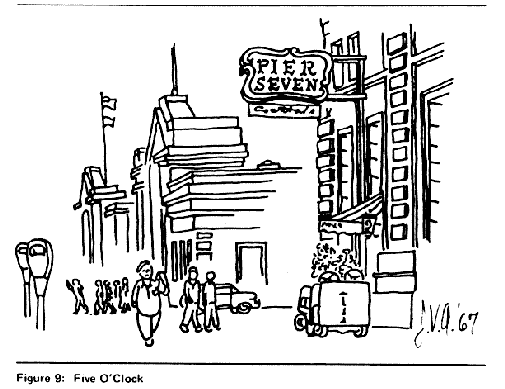
San Francisco Waterfront History

San Francisco Waterfront History
The San Francisco Waterfront
The Social
Consequences of Industrial Modernization
Part One; "The Good Old Days"
By Herb Mills
Page 27
Occasionally, the two sets of gear standing at the opposite ends of a hatch would be required to handle a lengthy and/or heavy piece of cargo. In that event, the cargo might be independently slung by each set of gear or the two sets might instead be "frisco'd" together into one hoisting unit. In either case, the men of the two gangs working the hatch would proceed to work together.
Most vessels also had "jumbo" gear standing at the hatch just forward of the midship house. Occasionally, this gear, too, would have to be unshipped and rigged so as to load or discharge a still heavier item. As a rule, cargo was again placed atop cargo, frequently to the full height of the hatch. With this accomplished, the men would climb to the deck above and proceed to "cover-up."
Once the shelter deck had been loaded and covered up, the men went on to load and secure the deck cargoes. As a rule, these were the largest, if not the heaviest of cargoes simply because the weather deck and/or its hatch covers offered the largest area of open deck and because the cargo could be directly landed in stow.
